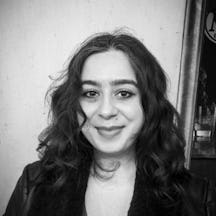Many of the women persecuted as witches in the 16th-century “witch craze” were over 50 and exhibited signs of menopause. Helen Foster suggests that the stigma of the wicked witch still affects older women and how they deal with menopause.
Witches
Words by Helen FosterEast Midlands Oral History Archiveartwork by Asma Istwaniaverage reading time 6 minutes
- Article
- Serial
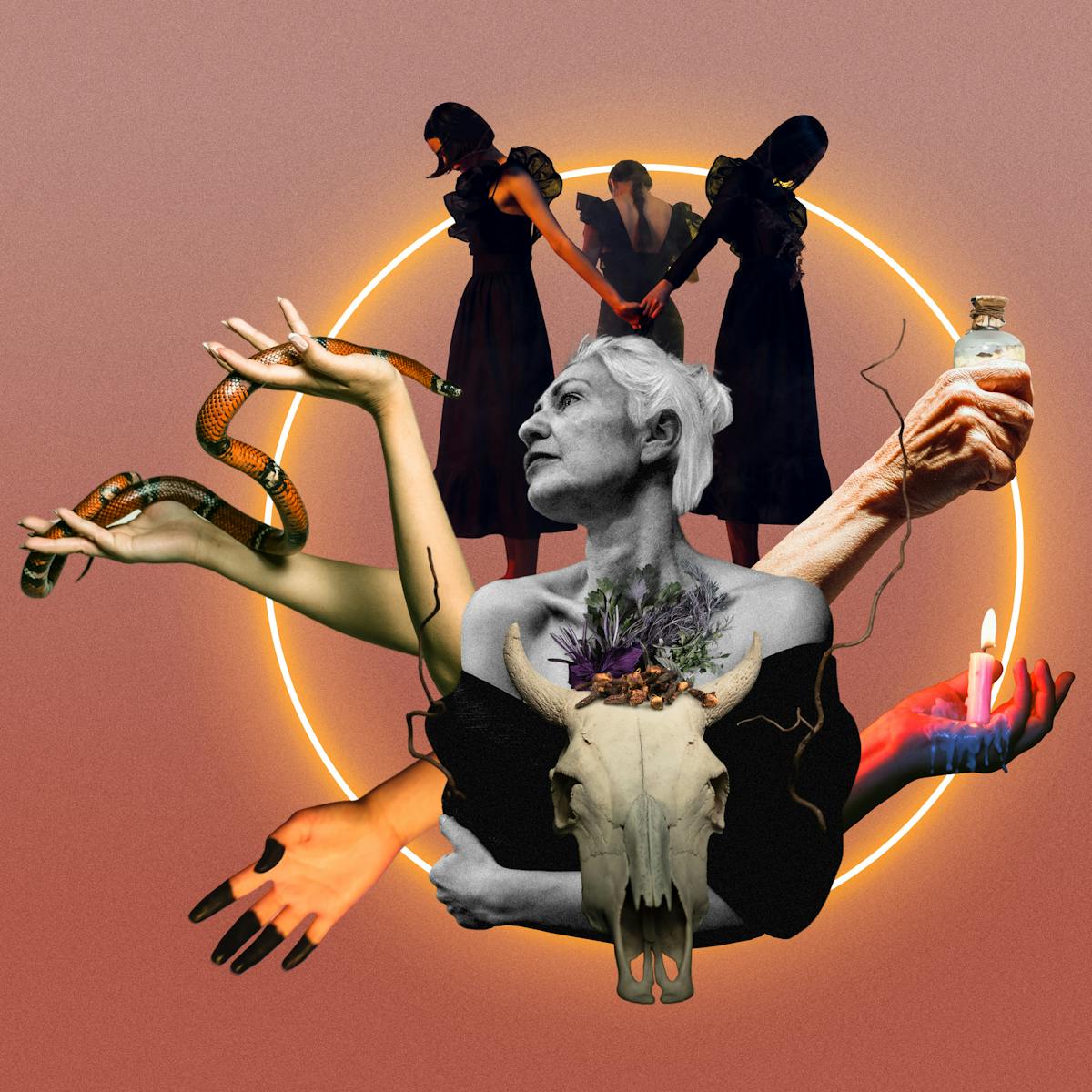
Women are often judged harshly by society. In the past, if they didn’t conform to expected behaviours and attitudes, they might all too easily be married off or run the risk of being labelled hysterics and locked up – or worse.
As they enter middle age and menopause, many women feel increasingly marginalised and unseen, but even if increased invisibility means less scrutiny, as Pippa acknowledges, it takes a conscious effort to free yourself from the constraints of other people’s expectations.
Wicked witches
Throughout history there are stories of older women portrayed as witches with evil intentions to cause harm to others. During the witch trials in 16th-century England, descriptions of the accused recorded features such as fragile bones, wrinkled skin and thinning hair, all physical changes that can be attributed to menopause. In ‘The Discoverie of Witchcraft’ (1584) Reginald Scot, witness to one trial, gives an account of the accused women as “commonly old, lame, bleare-eyed, pale, fowle and full of wrinkles”.
In early modern Europe, women were considered more susceptible to demonic temptations than men, due to the inherent feebleness of their sex. According to ‘Malleus maleficarum’ (‘Hammer of Witches’), the notorious 15th-century treatise on witchcraft, women were weaker in their faith and stronger in their carnal drives, with a “temperament towards flux” and “loose tongues”. Dutchman Johann Weyer’s account of women he saw in the witch trials in the 1560s calls them “pathetic, melancholic, hallucinating old women, whose age and sex made them a prey to diabolical fancies”.
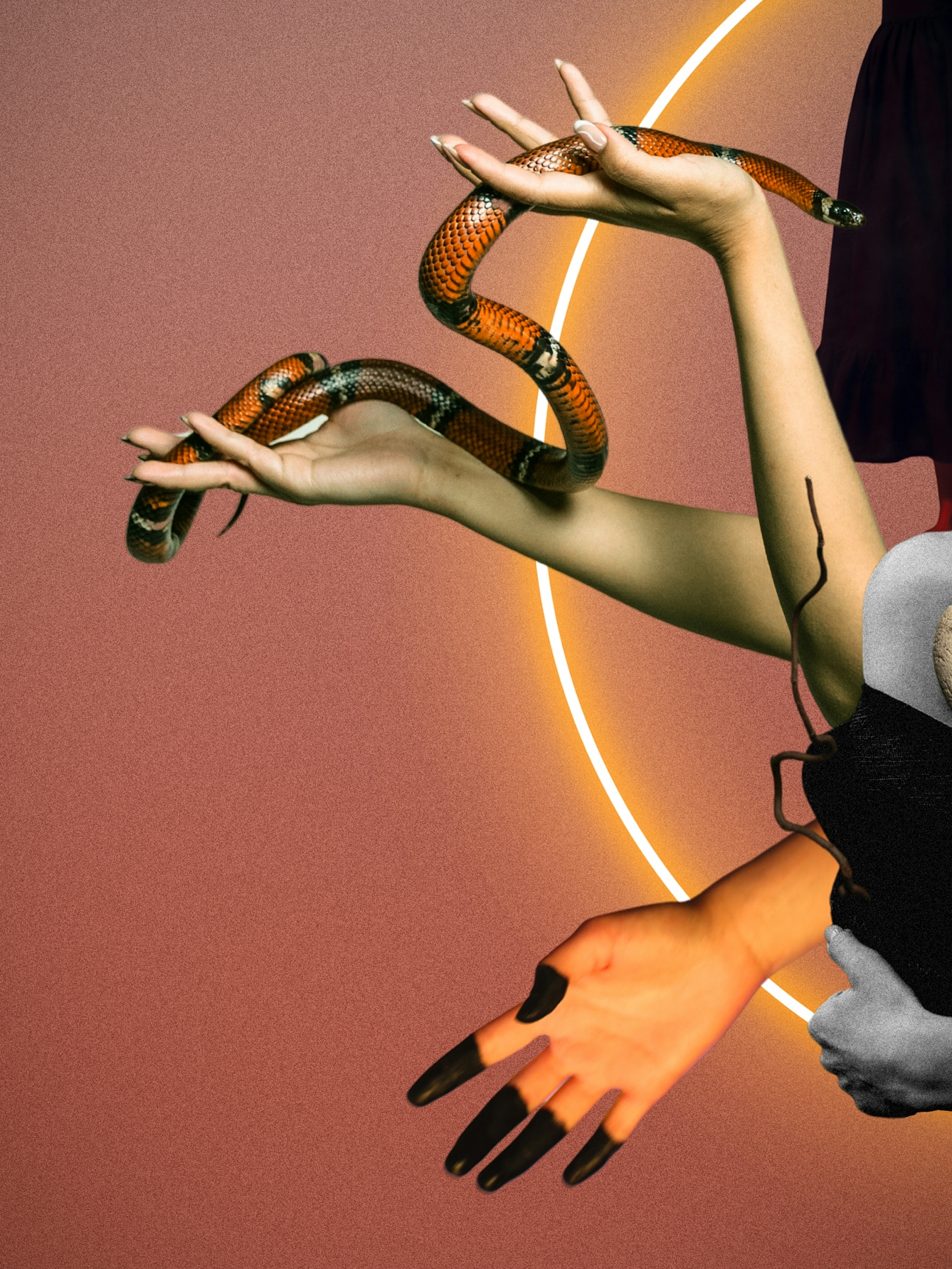
In the 16th century, women were seen as weaker in their faith and stronger in their carnal drives, with a “temperament towards flux” and “loose tongues”.
Witches were jealous, vindictive and manipulative – in fact, had all the characteristics of the evil stepmother and witch of fairy tales. They were blamed for failed crops, miscarriages, mysterious illnesses and sudden deaths, scapegoats for all the ills of a community. As the embodiment of the stereotypical witch, the ageing female was vulnerable to being portrayed as intent on evil, her body and mind decaying. Her lack of fertility made her redundant, undesirable and easy to dismiss.
The ‘witch craze’
The practice of witchcraft became illegal in England in 1563 and as a result, hundreds of people (some men, but mostly women) were accused and punished as witches. The persecution of witches wasn’t restricted to England, and “witch crazes” broke out across Scotland, Europe and North America from the late 16th century, continuing in some cases into the 18th century.
Hundreds of years later we still find a reluctance from older women to draw attention to themselves and speak openly about their experiences.
The evidence for being a witch could be as insignificant as having features considered to be the marks of a witch, such as a third nipple, an unusual scar or birthmark, a boil or a growth. Some women were condemned for living alone and owning an animal, such as a cat – the witch’s ‘familiar’.
Confessions of witchcraft were often extracted under torture. The accused were tied up thumb to toe, and thrown into a river or a pond. If they drowned, they were innocent; if they floated, they were guilty and, after a show trial, hanged. Most of the victims of these witch trials were female and aged over 50.
An easy target
There was no single cause for the witch craze. Both the Protestant and Catholic churches participated in witch trials, and many happened at a local level in times of unrest, without sanction from a higher authority.
Older women who were widowed or lived alone and had no family to protect them were particularly vulnerable in times of uncertainty or famine, when the rule of law broke down and resources were scarce or threatened. Already seen as having little value, if they were also outspoken or troublesome, accusing them of witchcraft became an easy way to be rid of them.
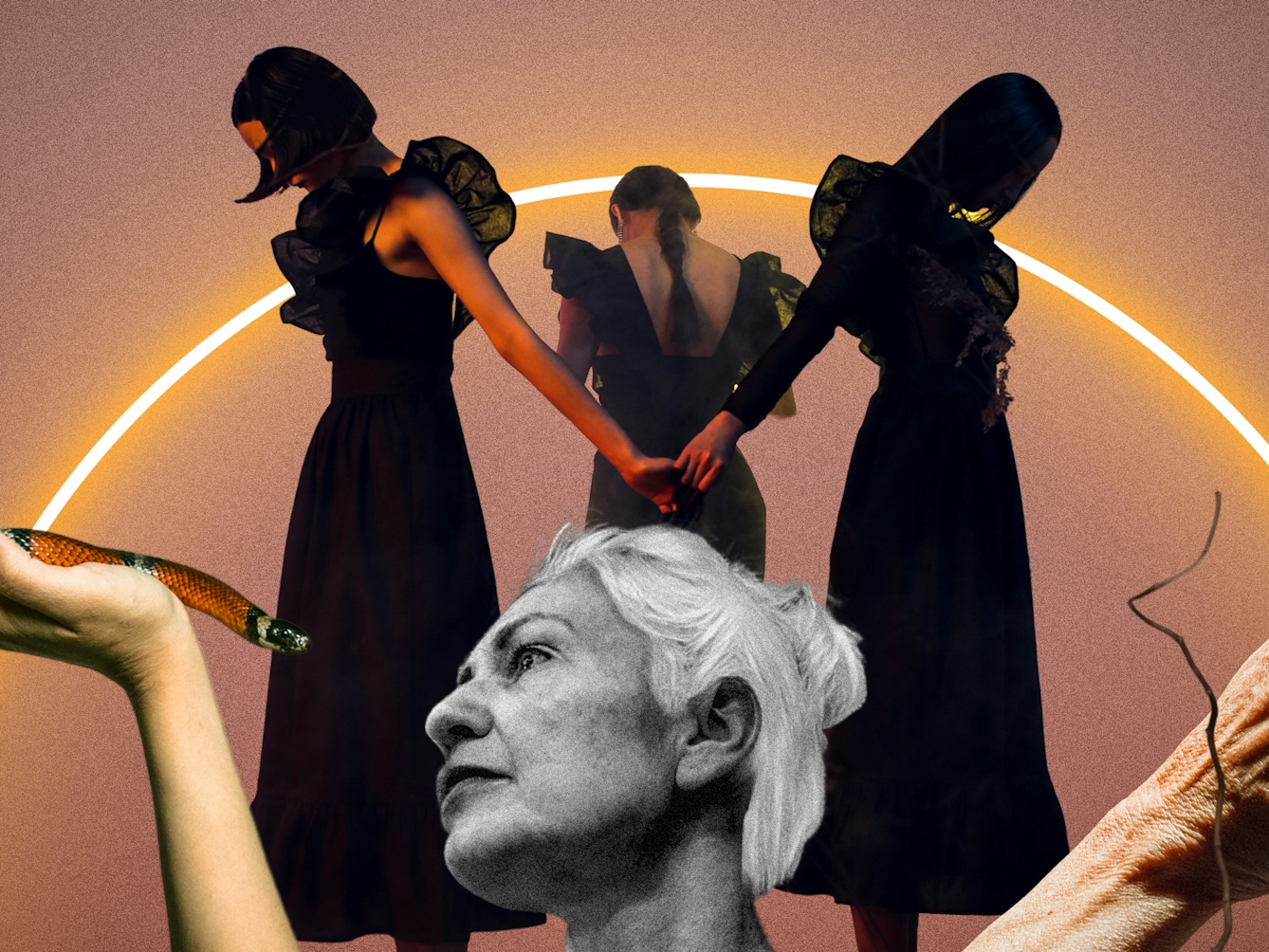
Vulnerable older women were an easy target for accusations of witchcraft.
In his book ‘Battling Demons’, historian Michael D Bailey notes that most women accused of witchcraft were known to defy conventions and norms of the female sex, be more outspoken and overstep boundaries. Older women who drew attention to themselves, who were too independent or influential were vulnerable to accusations of practising witchcraft.
Hundreds of years later, we still find a reluctance from older women to draw attention to themselves and speak openly about their experiences. Claire recalls her mother’s silence around menopause.
Modern witch trials
The stereotype of the evil witch is very much alive today. On social media, misogynist attacks on women, particularly older women, often focus on their physical appearance and ‘hag’, ‘witch’ and ‘crone’ are common terms of abuse used to shut down assertive and influential women.
Women in politics are often attacked: Hillary Clinton was widely described and depicted as a witch on social media, and Julia Gillard, first female prime minister of Australia, was taunted with “ditch the witch” by her opponents. Researcher Dr Maggie Webster notes that the historical stereotype of the hag-witch carries a “symbolic violence” that has been used to control and silence women for centuries.
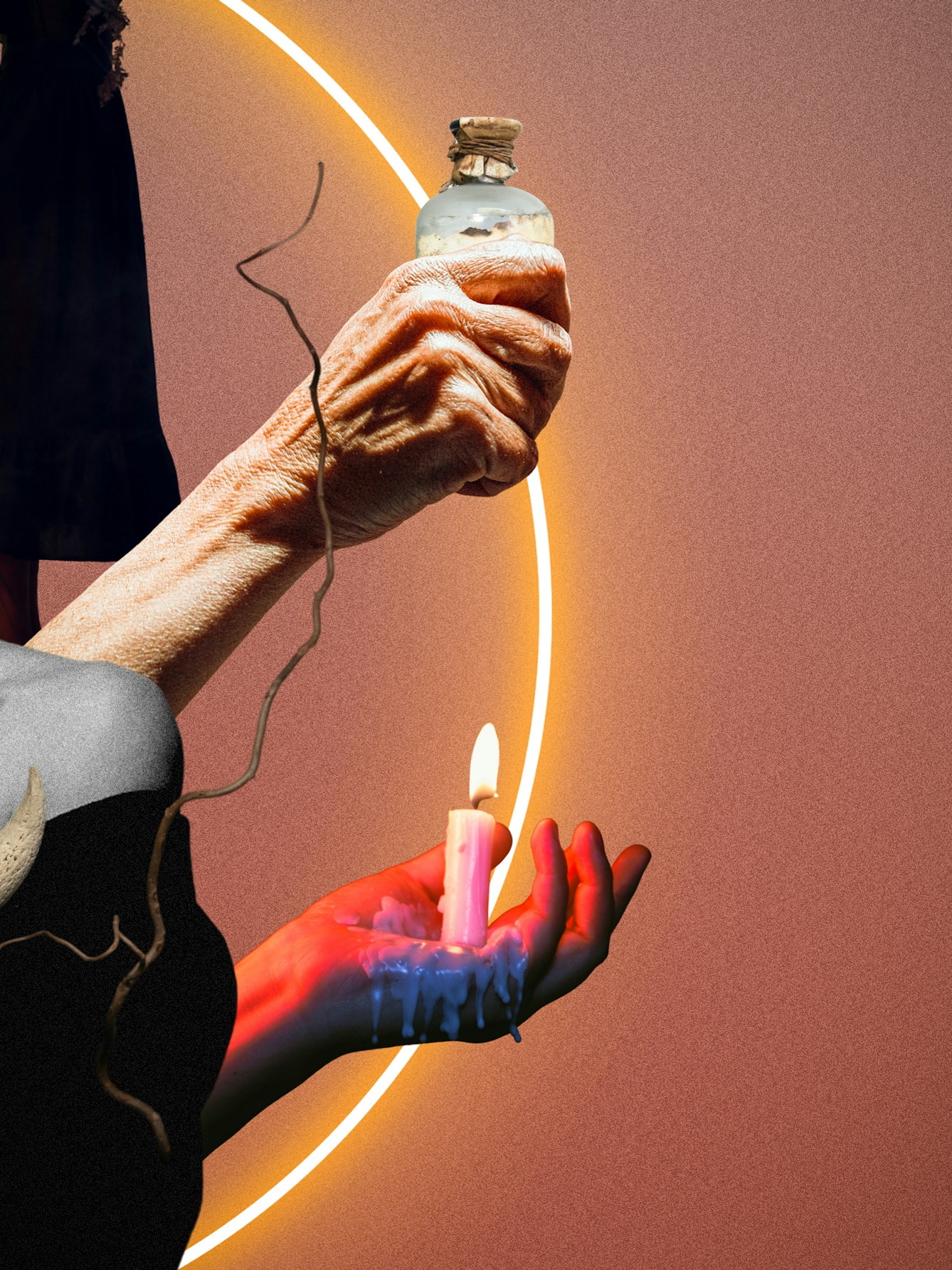
On social media, ‘hag’, ‘witch’ and ‘crone’ are common terms of abuse against women, especially middle-aged women.
The mad, cackling witch exhibiting irrational behaviour has become a distorted embodiment of the older, menopausal women. No wonder that women don’t want to draw attention to themselves in menopause. Many complain of mood swings and unpredictable behaviour as a result of fluctuating hormone levels but often struggle in silence.
Subverting the stereotype
Although there have been examples of good witches in Western culture, they tend to be youthful and attractive, and the scary, ageing witch continues to influence perceptions of menopausal women.
The Menopause Banshee character, from the animated series ‘Big Mouth’, is a contemporary “hormone monster” who is depicted as a craggy-faced, wild-haired, cackling hag. But in a programme primarily aimed at hormonal adolescents, the witch-hag stereotype is subverted, as the banshee brings menopause but also extolls “the positive aspects of menopause, the freedom from birth control and anxiety about pregnancy, as well as the ability to move into another phase of life” while continuing to enjoy life’s pleasures.
For Jocelyn, talking about the realities of menopause and addressing it openly might be one way to help destigmatise older women.
The best way to combat the stereotype of the older, menopausal woman as an unpredictable, scary witch is to remove the veil of secrecy and silence around menopause and for women to be seen and heard on their own terms. The more that older women are part of the conversation, the harder it becomes to shut them down or dismiss them.
About the contributors
Helen Foster
Dr Helen Foster is a writer and oral historian currently based at the East Midlands Oral History Archive at the University of Leicester. She has a particular interest in narratives around life stages and, as well as menopause, her work has explored childlessness and bereavement. As a poetry-therapy practitioner she facilitates workshops for people living with mental health challenges, using writing as a therapeutic tool. She is currently co-authoring a book on creative writing and health for Emerald Press.

East Midlands Oral History Archive
The audio extracts used in the series ‘A Bloody History of Menopause’ come from interviews, conversations and audio diaries about lived experiences of menopause recorded for the Silent Archive project. The project was led by the East Midlands Oral History Archive at the University of Leicester (from 2020–22) and funded by the National Lottery Heritage Fund.
Asma Istwani
Asma is an artist and arts producer from London. She has worked with several organisations and brands, including Tate, Somerset House and Jo Malone London on a variety of creative projects. Through her collages she aims to make relatable statements about the experience and racial and sexual depiction of ‘othered’ women, with special interest in those who, like herself, make up the SWANA (South West Asian/ North African) diaspora. Asma is also the founder of RIOT SOUP, an art collective and community for Black and Brown women artists in London.

